Boxwood care: a guide to growing these iconic evergreen shrubs
Boxwood is a timeless choice for topiary, hedges, containers, and more – here’s how to grow it in your garden
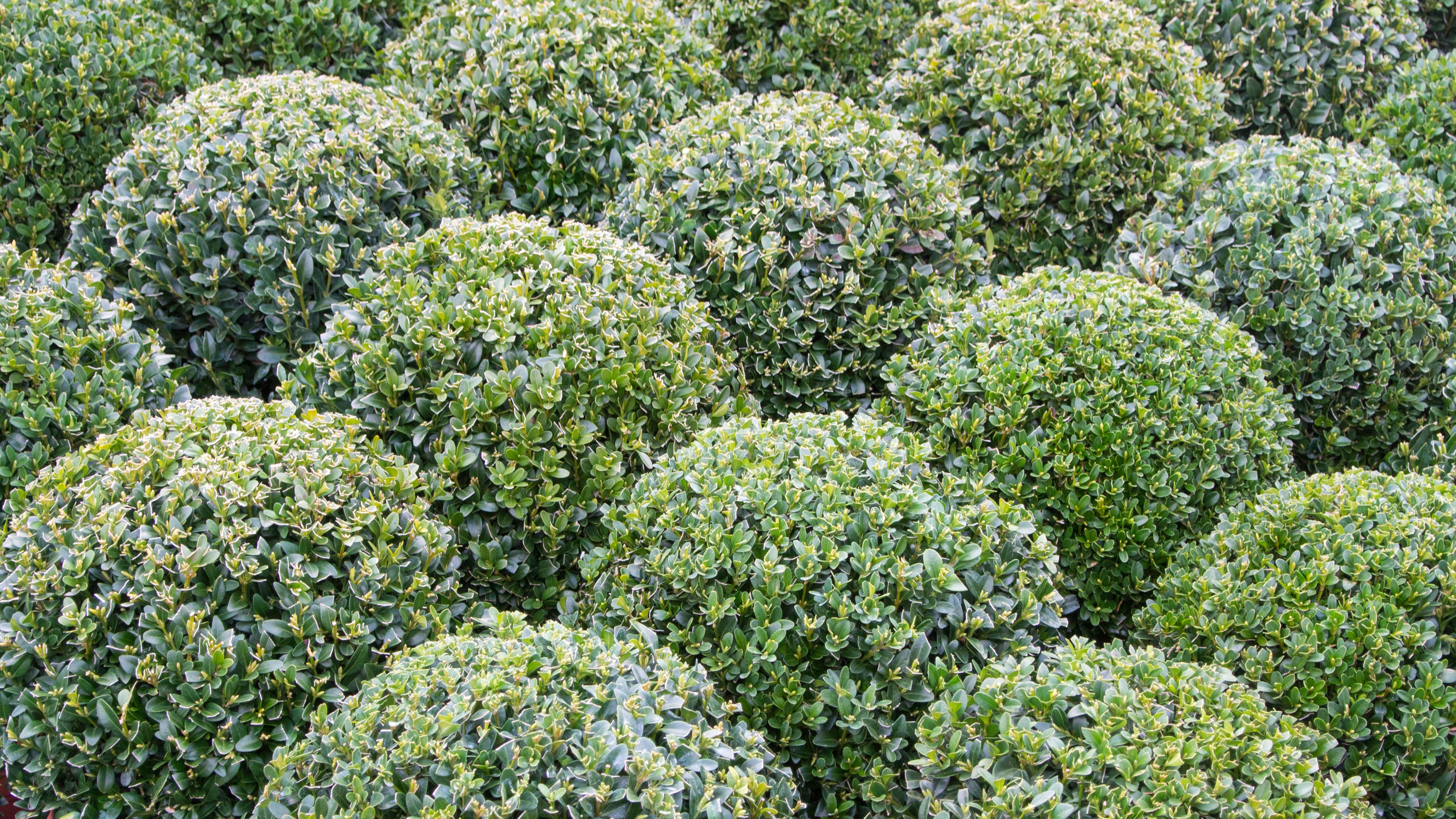

Boxwood, originally from Europe and Asia, is an evergreen shrub or small tree. Also known as box, this classic, elegant evergreen (Buxus) is a dense, slow-growing plant with small, dark and rather leathery leaves. It develops tiny spring flowers, although they are usually hidden amongst the leaves, and it is tolerant of a range of growing conditions.
Different species of boxwood grow in different parts of the world, although none grow naturally in North America. Most grow in tropical or subtropical areas, so are not tolerant of cold winters. The European Buxus sempervirens is the most widely grown and is more tolerant of cold winters than other species, although in recent years it has suffered from pests and disease problems.
Boxwood is frequently clipped to create low hedges in formal gardens, or around the edges of informal plantings. Given their stature, box trees are some of the best shrubs for small gardens, particularly when trimmed into miniature borders and edgings, evocative of cottage gardens, stately homes, parterre plots and potagers. That said, they can be clipped to any height from 12in (30cm) to 6ft (1.8m), though taller hedges may tend to open up towards the top.
Thanks to its dense growth habit and general ease of maintenance, boxwood is also the favourite shrub for creating topiary. From neat fat balls, cones and spires to more ambitious topiary such as birds, buildings or even elephants and trains, this plant lends itself to all sorts of creative gardening shaping. Boxwood can work with a range of designs, from undulating curves and clean architectural lines to tight geometric knots.
With an appeal that manages to be somehow ‘chocolate box’ quaint and stylishly contemporary at the same time, box is the quintessential shrub for self expression. Synonymous with form and refinement, it’s an enduring and impactful plant for any garden. Here’s how to grow your own beautiful boxwood for year-round interest and distinction.
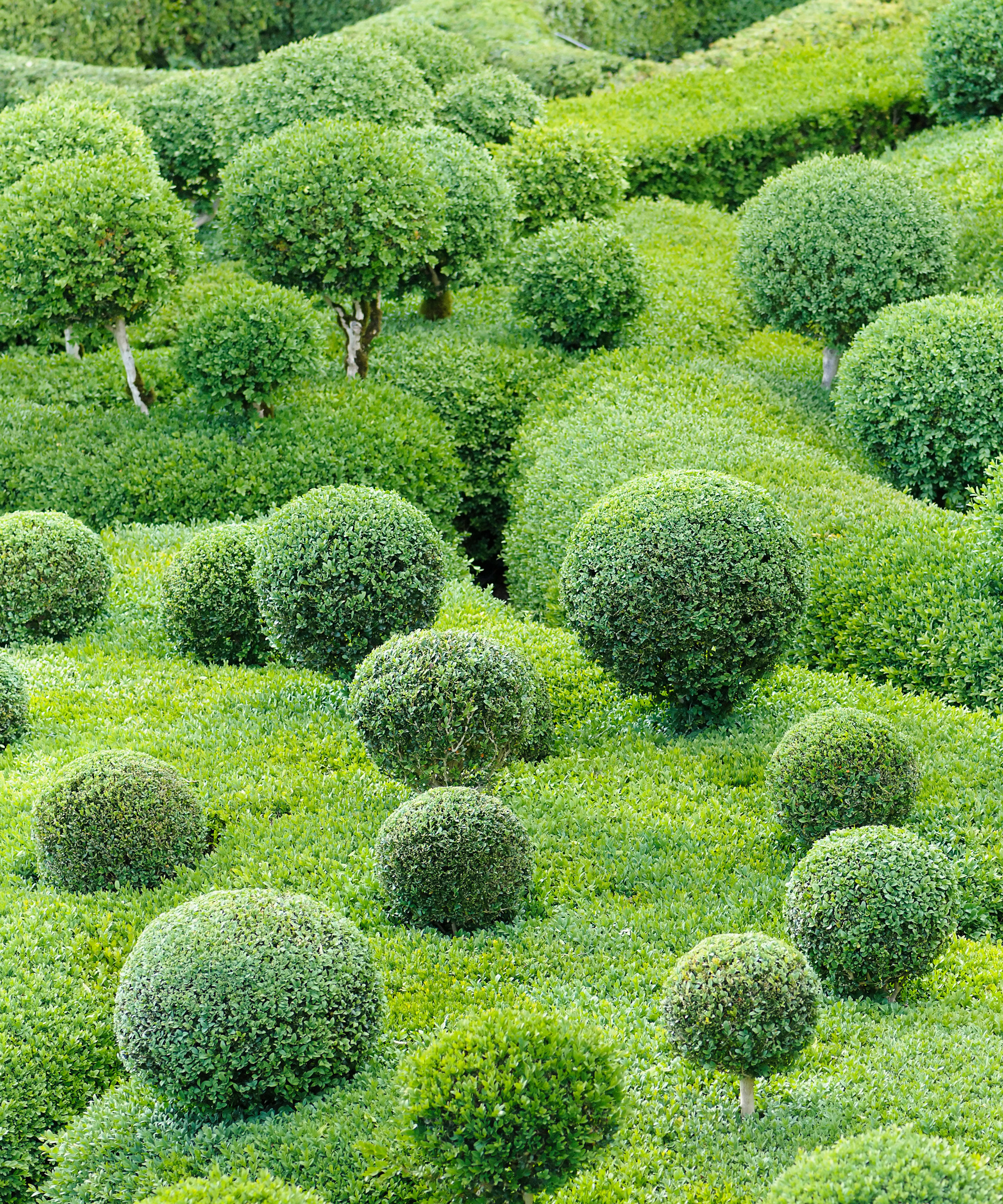
As hedging, boxwood creates strong outlines, appearing bright green with the new flush of foliage in spring
How to use boxwood in your garden
As well as being the shrub of choice for inventive topiary, boxwood is revered as a stylish garden edging. Thanks to the fact that it is such a resilient and well-behaved evergreen, it is one of the best hedging plants you can grow. Compact, lush and intricate, it can be used as a low, medium sized or tall hedge. Of course, the clipping routine you choose (and how well you maintain it) will determine whether it retains a neat, formal appearance or is allowed to develop a more relaxed look.
Buxus can also be used as a screening shrub to complement traditional and modern garden screening ideas, from the functional to the highly stylized. The bright Littleleaf boxwood is great for low-growing formal hedges, while dwarf varieties make charming accents around walkways. As well as supporting whimsical and elegant plant combinations in garden borders, box trees make excellent specimen shrubs. A series of identical specimens in a larger space really helps to tie a garden together.
When you think of evergreens that are easy to grow, boxwood isn’t far from the top of the list. If used thoughtfully, it can actively help to make a small garden look bigger – as long as it is maintained regularly, that is. It is, of course, important to remember that its flowers are small and hidden. So it’s the formality or the year-round presence of the plant that creates its true appeal.
For anyone keen on growing the best foliage plants, variegated boxwood varieties add an extra attraction. With leaves that are edged or mottled, or striped in white, cream or yellow, these varieties are slower growing than green-leaved types. But they make attractive specimens, and short sprigs are highly prized snipped off for winter arrangements. Glossy ‘Elegantissima’, with its creamy leaf margins, is recommended.

The slow-growing Buxus sempervirens ‘Elegantissima’ is a charmingly variegated boxwood variety to try
When to plant boxwood
Boxwood is an easy-going shrub to grow and there aren’t many rules about optimum planting. As with any of the best evergreen trees, the best time for planting in most areas is in fall or spring.
Buxus can also be planted in mild spells in winter, but not when the ground is frozen or waterlogged.
Avoid planting in summer – newly planted evergreens dry out so quickly in summer, it’s difficult to keep them moist. If they dry out, they will fail to establish and may die.
Where to plant boxwood
Whether you are looking to grow boxwood as specimen trees or as hedges, these plants grow well in most soils. That said, they seem to prefer a pH of 5.5- 7. Checking your soil type can help determine the best spots for your shrubs. If the soil is light and sandy, work in some organic matter to improve moisture retention. If the soil is heavy, break up the base of the planting hole to help excess moisture drain away.
They do not need lime-free conditions, and they are happy in full sun or part-shade in USDA zones 5-9, but their growth will be more loose and open in shady situations. You may also be keen to use boxwood to accentuate existing container gardening ideas – or you may want to try a couple as specimens in pots. This is fine, and growing box trees in containers requires no special insider knowledge: just keep well watered.
After planting, give your boxwood plant a weak liquid feed so they have the best start. You should also give your newly planted tree a good mulching with bark chips or other weed-free matter. A 3in (8cm) layer helps retain moisture and keeps roots cool. Boxwoods should also be irrigated well during long dry periods, particularly in the first year. This helps to prevent stress, which can make them more prone to disease.
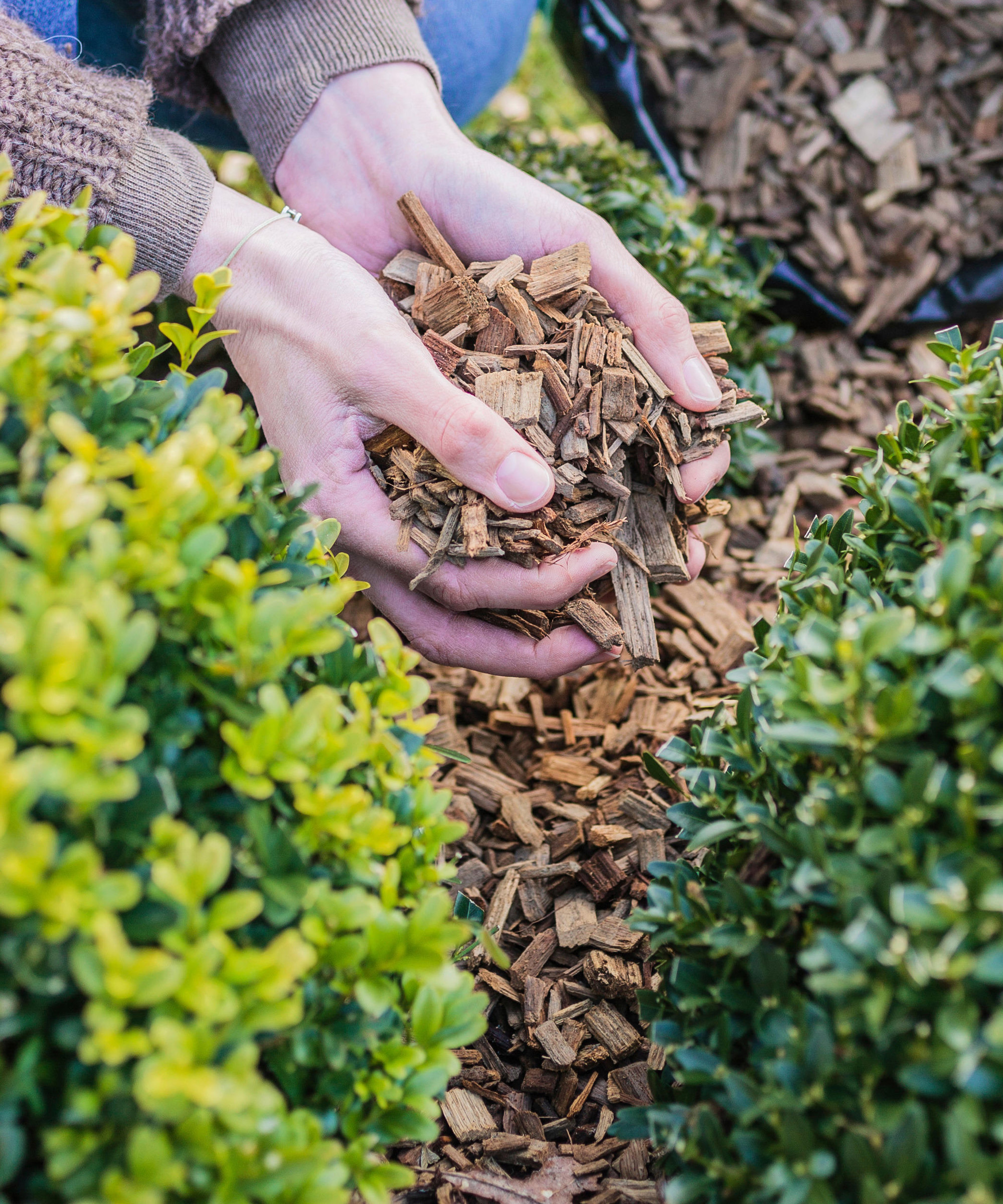
Remember to mulch with bark chips after planting in order to give your boxwood shrubs the best start
How to plant a low boxwood hedge
The ultimate topiary edging around beds and borders is the timeless boxwood hedge. And for those whose perfect garden edging ideas involve low rectangular borders of neatly clipped foliage, it’s quite easy to try the look for yourself. If you want to create your own parterre style, which works equally well flanking traditional and contemporary garden designs, here’s how to plant a low boxwood hedge:
- Choose the right variety to ensure it is as compact as possible. ‘Suffruticosa’ is a good example of a shrub that is less vigorous and grows more densely than most boxwood varieties.
- Fork over the area where your new hedge is going to be planted. Depending on the intricacy of your flowerbed ideas, this is most likely to be a long, narrow strip. Work in some soil improver and tread firmly. Use a string tied to two sticks to mark the line of where the hedge will be.
- Boxwood plants intended as low edging hedges are often sold bare root: dug up from the nursery with the soil knocked off. This reduces the cost of shipping significantly. It’s not hard to plant bare root plants, though. Just soak the roots overnight and plant them carefully with a trowel. Firm well, water in and layer with bark chips or a weed-free mulch.
- Spacing your boxwood shrubs out accurately is important. For a low hedge 12-15in (30-40cm) in height, measure the length to be planted. Multiply this by six to find out how many plants to order. The plants will be set 6.5in (16cm) apart.
- For a taller boxwood hedge, around 15-32in (40-80cm), set the plants 8in (20cm) apart. And for a hedge that is taller than 32in (80cm), set them at 10in (25cm) apart. Cut a piece of stick the same length as the planting distance, and use this as a measure.
- It’s always wise to order a couple of extra plants and plant them in a quiet corner. That way, if one of your new hedge plants dies, you have a perfect replacement of the right size ready to go.
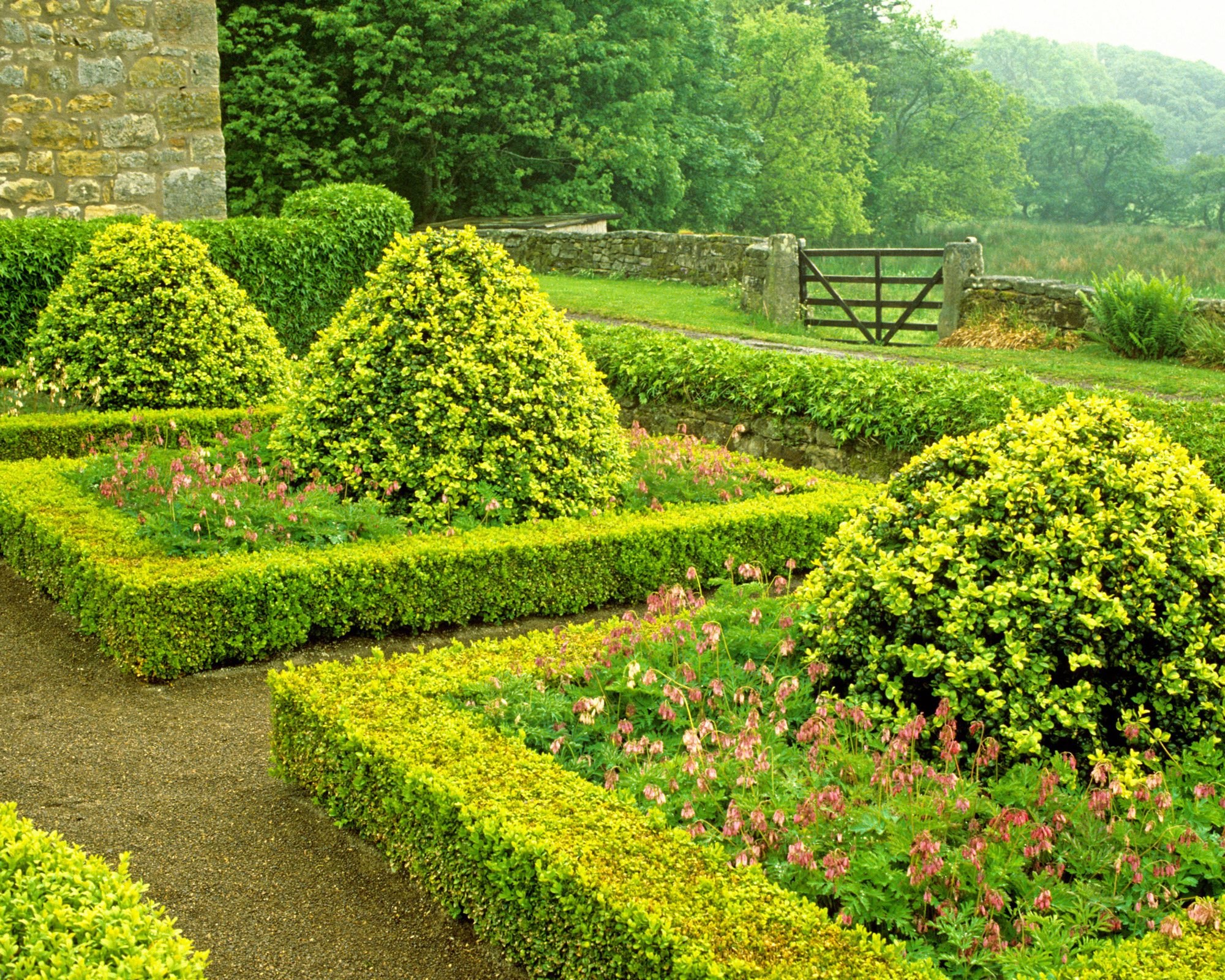
Space plants evenly and check the ground is uniform for a balanced parterre look, as with these Buxus sempervirens and ‘Suffruticosa’ hedges
How to use boxwood as foundation planting
As well as being a brilliant shrub to trim into pleasing shapes, growing boxwood brings plenty of practical advantages. It helps to demarcate borders and beds and add definition to walkways. For those keen on better landscaping with shrubs, boxwood is a useful way to conceal or de-emphasize less impressive aspects of a home’s exterior – alongside the house, in particular. Buxus is an ideal plant to use for foundation planting, as a ‘transition’ plant between home and garden, and a way of hiding specific features you might not like so much.
Its resilience and its dense growth make it an excellent plant to hide the foundation blockwork or rendering. So if you’re looking for visually pleasing cheap landscaping ideas, it’s perfect. Some boxwood varieties are more vigorous than others, so check the tags or website descriptions and note the final size of the different varieties, then choose those that best suit your situation. Once established, boxwood is resilient, tolerating the dry conditions or strong sun sometimes found in foundation borders.
Soil conditions can be very poor in foundation borders, so thorough amendment before planting may well be necessary. Grab your best garden rake, sift and remove any debris left from when the house was constructed. Replace with top soil or add soil improver to boost the root zone. In very dry situations, it can be helpful to install a drip irrigation system to keep foundation plantings from drying out.
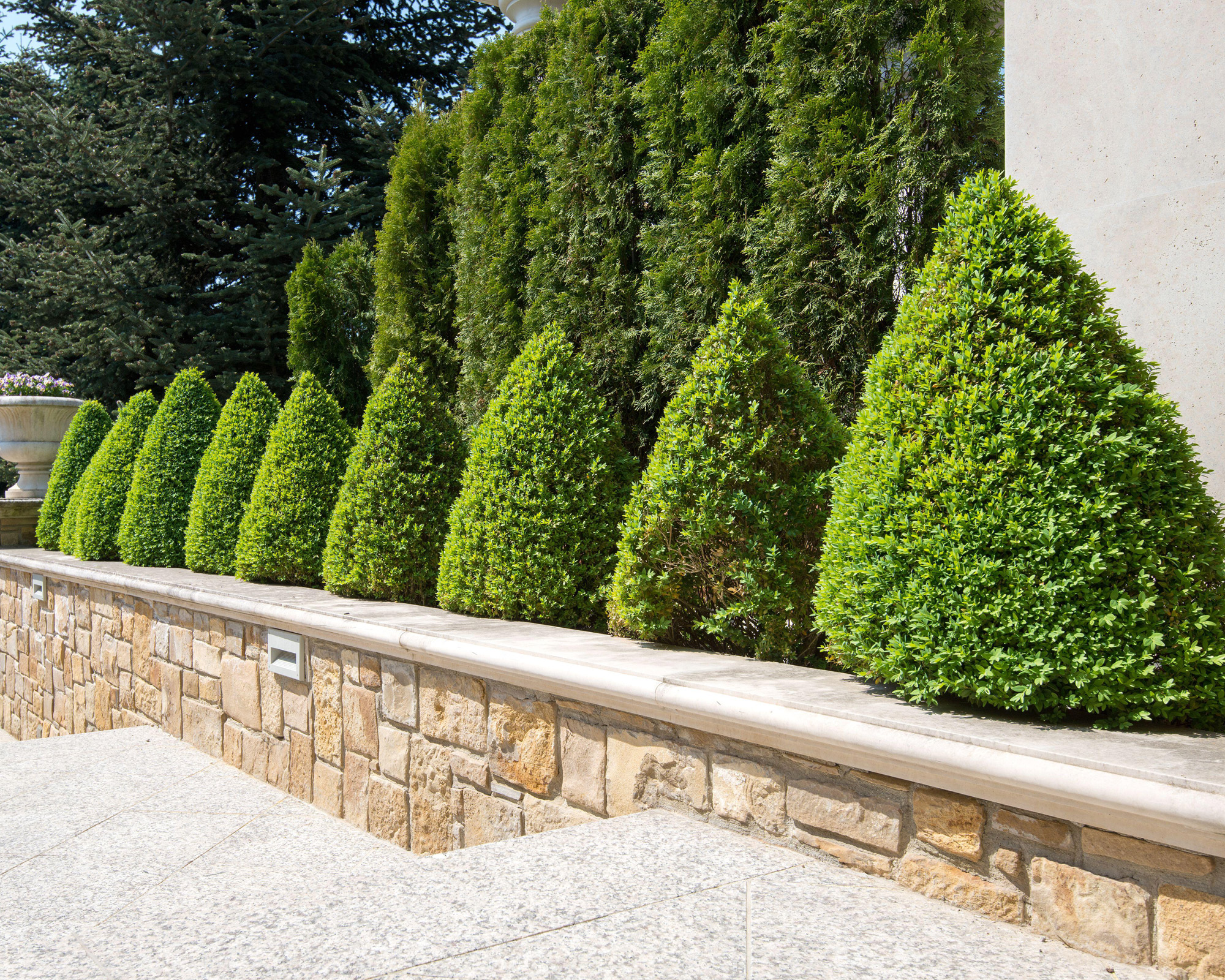
Boxwood can be used in foundation planting as a neat and pleasant transition between home and garden
When and how to clip boxwood
As we have pointed out, boxwood is a beautiful shrub for shaping, thanks to its dense growing habit and durability. But even if you aren’t looking to turn your shrub into a topiary triumph, you’ll need to carry out some regular clipping duties to keep your shrub looking its best. Buxus may not be one of the most fast growing hedges, but it can soon look messy and unwieldy if not kept well trimmed.
Established specimen boxwood bushes are usually best clipped in late summer. Topiary and dwarf box hedges may well need a second clipping, since it is important that they look neat. Buxus is very resilient and can be clipped at almost any time from spring to autumn, so be guided by how the plants look. So grab your best secateurs or hand shears, or an electric hedge trimmer. If all else fails, we’ve seen kitchen scissors used!
A general rule for pruning shrubs is to cut back around a third. Go in stages with the branches on your boxwood, and take your time until you reach the height and shape you desire. Wipe your pruning tools down thoroughly with disinfectant both before and after use. You should also collect the clippings for disposal to prevent the risk of spreading disease.
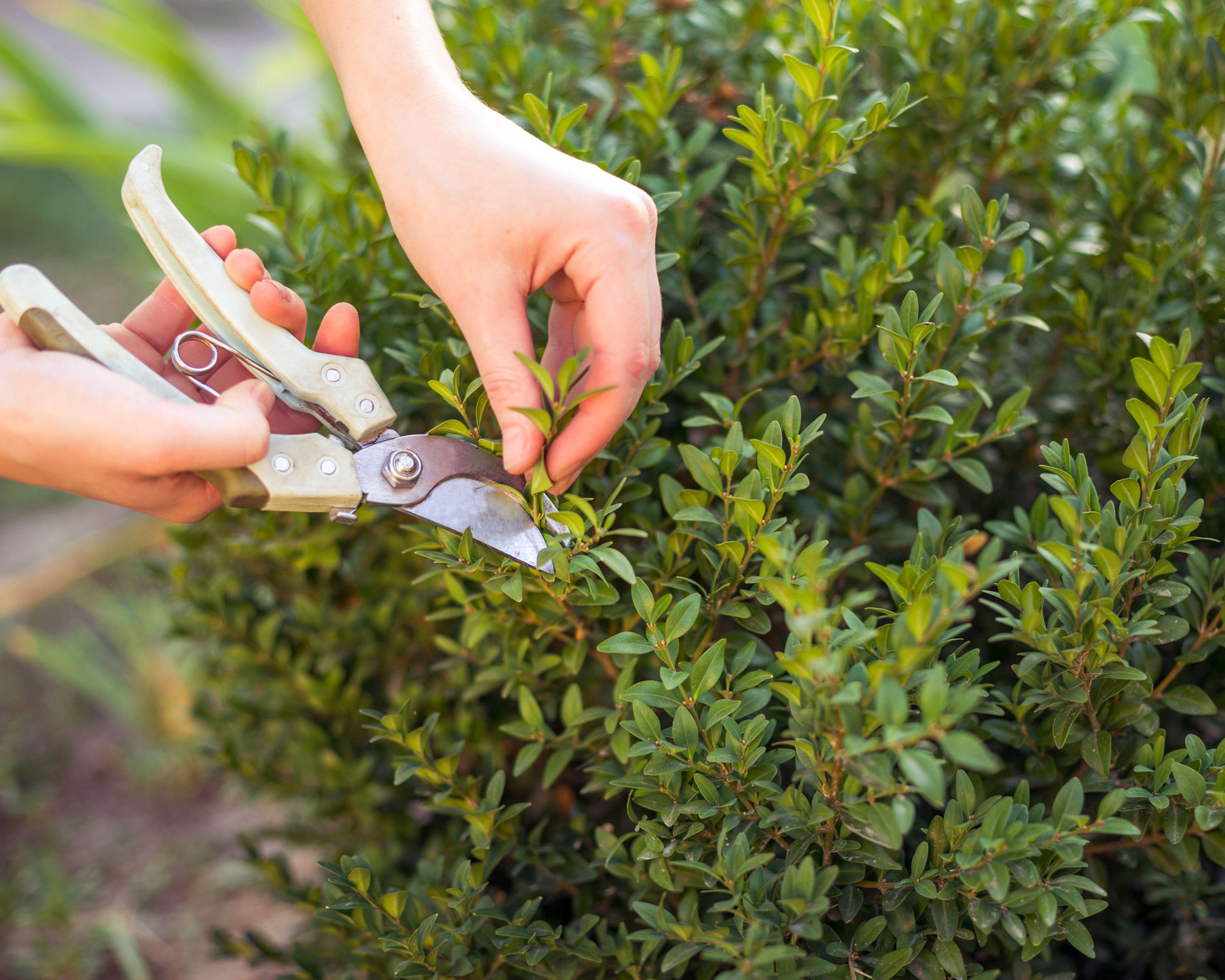
It’s a good idea to clip your boxwood hedges twice a year in summer to keep it looking at its best
How to grow boxwood from cuttings
If you want to make more boxwood plants for free, you can propagate new plants from cuttings. Adding to your evergreen perennials gives you even more options for adding shape and structure to borders and edgings. Yes, they take a little while to grow, but the results are worth the wait. Boxwood cuttings root easily at any time from mid-summer to mid-autumn.
Buxus lovers who want to know how to take cuttings from plants can follow these seven steps to cuttings success:
- Fill a 4in (10cm) pot with a 50:50 mix of potting compost and grit. Tap the pot on a hard surface to settle it.
- Cut 4-6in (12-15cm) shoots from your boxwood plant. Make sure they are lush and healthy and that there are no signs of pests or diseases.
- Using sharp pruners or kitchen scissors, trim neatly under a leaf joint near the base. Pinch off the leaves from the lowest third of the stem.
- Push each cutting into the compost in the pot until the lowest leaf is just above compost level. Four to six cuttings should fit in one pot.
- To keep the cuttings humid, put a clear polythene bag over them. Secure with a rubber band around the rim of the pot.
- Stand in a warm, shady place, and wait. After four weeks, check to see if roots are emerging through the drainage holes in the base of the pot.
- When they are, individual rooted cuttings can be removed from the pot and moved into their own 4in (10cm) pots to continue development.

Insert some boxwood cuttings into a pot and then cover them with a polythene bag
Boxwood problems and how to fix them
Boxwood problems are usually most severe on European box (Buxus sempervirens). Dwarf, densely growing varieties are more often affected than taller, more vigorous types. And any that develop crowded growth tend to suffer more than large plants with open growth. Here are a few issues that you might have – and what to do:
- Key issues with boxwood are box blight and box sucker. Blight is a fungal disease that causes bare patches and dieback. It’s most likely on plants used for hedging and topiary. Box sucker is a sap-sucking louse resulting in stunted spring growth. Japanese boxwood (Buxus microphylla) like ‘Faulkner’ is good for hedges as it is less susceptible. Disease-resistant hybrids (BetterBuxus and NewGen) are also being tested.
- You may find your boxwood gives off an unpleasant smell. Some buxus owners complain of a smell like cat urine. This can be stronger on a hot day, when the sun’s heat causes oils in the foliage to evaporate. But some never smell it, and others say it’s sweet! Varieties of B. sempervirens are more likely to smell unpleasant. Try other plants nearby to counter the smells, like various types of honeysuckle, or you could grow jasmine to mitigate any unusual aroma from your boxwood.
- You may see cobwebs on your boxwood. This is webbing created by box tree caterpillars. These small grubs eat the leaves, and the webbing helps protect them from predators. Caterpillars reach an inch (3.5cm) long and have green bodies striped in black and white. Combat this by making bird feeders or hanging some nearby to attract blue tits, which eat the grubs. Alternatively, remove them by hand.
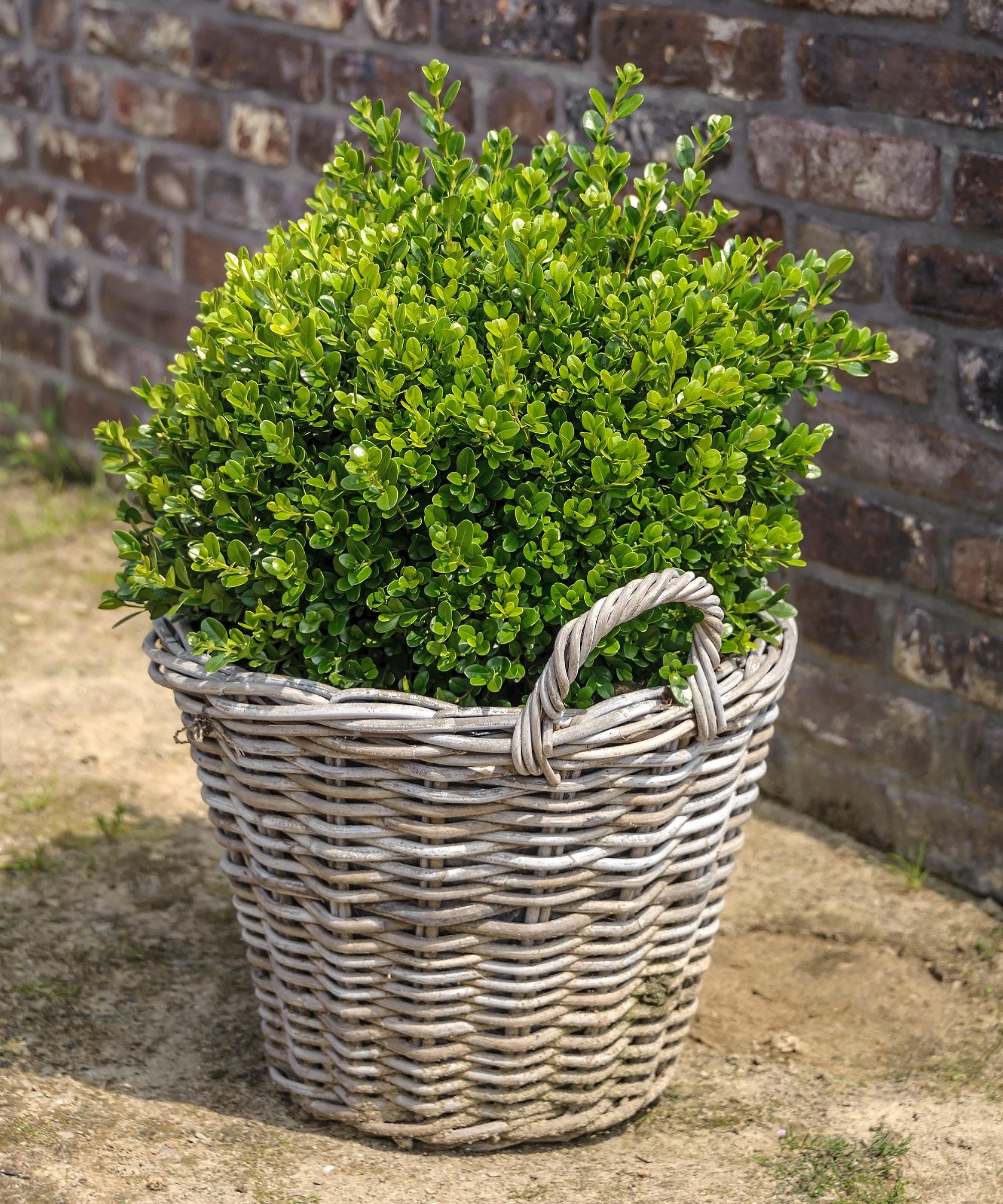
Buxus microphylla ‘Faulkner’ is less susceptible to disease
Why is it called boxwood?
Different types of boxwood share some common characteristics. One key commonality is that they grow slowly. Because these evergreens are so slow growing, they develop a fine grain and a hard, heavy timber. For this reason, boxwoods are ideal for wood carving, engraving and musical instruments such as recorders and oboes. They are also used in making cabinets – and believe it or not, they are used to make wooden boxes!
The main properties of Buxus sempervirens timber are resilience, a silky texture and an ability to hold precise details in carvings. This creamy pale yellow wood tends to be highly stable and uniform. However, while the shrubs work well in tandem with all manner of small garden ideas, their size means they are better for smaller woodworking projects. This would have a bearing on the types of box that could be made. You’d need a fair few shrubs to make significant numbers (or sizes) of boxes.
What we do know is that buxus is one of the oldest known garden plants, dating back to 4000 BC. Native to southern Europe and northern Africa, it was traditionally viewed as a subdued and solemn plant. In some cultures, sprigs of the shrub were once given to funeral mourners to throw on coffins – a very specific kind of box…
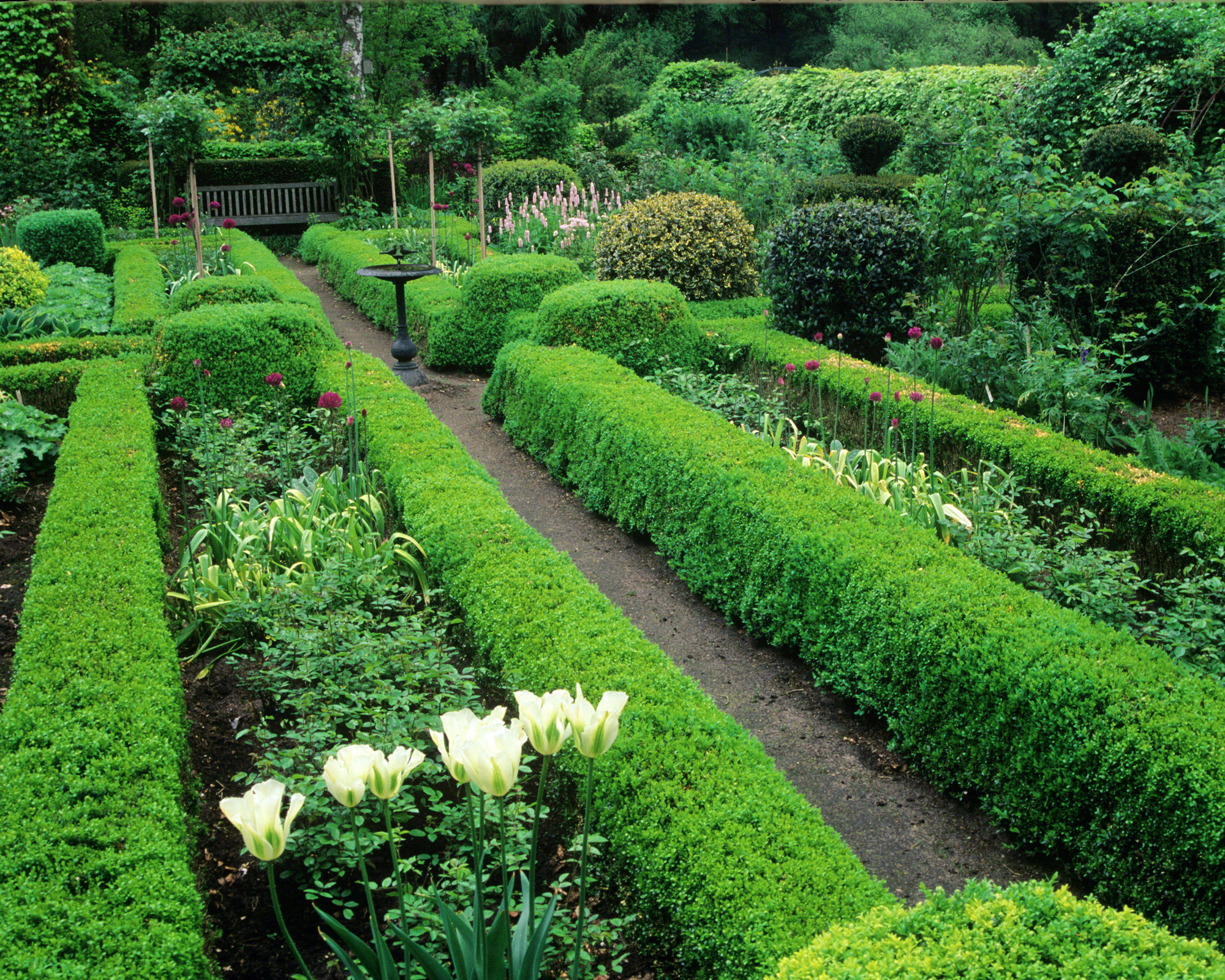
Grown as uniform groupings in classic hedge lines, the humble boxwood shrub is one of the oldest known garden plants
How many kinds of boxwood are there?
The genus Buxus covers roughly 70 species of plants and shrubs, with dozens of cultivars available for home growing. Collectively, these plants are commonly referred to as ‘boxwood’ or ‘box’, yet they may well have different names on their labels. The differences between the various types of boxwood are not immediately clear. For example, there are none with flamboyant or vivid flowers, as you might expect if you know how to grow camellias, mahonia, vibrant types of viburnum or witch hazel – and the few with noticeably large leaves are rarely seen.
Instead, they vary in less obvious features, such as hardiness, elegance of growth, richness of leaf color, leaf shape and resistance to disease. Varieties of only two species are regularly seen for home growing: Buxus microphylla and Buxus sempervirens. To most of us, these do look very similar. Still, there’s plenty of scope between the likes of American boxwood (B. sempervirens), with its larger, spreading habit, and a dwarf evergreen like the Japanese boxwood (B. m. var. Japonica). And the possibilities of manual shaping only add to the visual dynamics.

There are dozens of boxwood cultivars available for home growing, varying in leaf color, shape and resistance
What to plant with boxwood
Boxwood shrubs look incredible as specimen shrubs, especially trimmed into tight, dense geometric shapes and grouped to play on those shapes. Similarly, a repeating sequence of defined edges or curved lines plays to your boxwood’s strengths. However, the right partnerships with other plants and shrubs can elevate the appeal of your boxwood – accentuating textural, height or color contrasts.
The best combination for boxwood plays on the natural colors of adjoining plants. If you want to accentuate a quintessential cottage garden with delicately tinted types of roses, go for it. Any look that plays on soft or pastel palettes works well in combination with boxwood.
Anyone who knows how to grow hydrangeas will appreciate the visual contrasts. Boxwood also makes a great companion for wilder, more carefree plantings such as helenium and coneflowers. If you are looking to grow echinacea, these shrubs create a tidy, compact balance.
For a bolder partnership, try matching with different types of cosmos, daylilies, zinnia or rose campion (Lychnis coronaria). Vividly tinted shrubs include purple berberis and red euonymus.
If you seek an attractive counterpoint based on texture, partner your boxwood with plants that possess distinct or unusual shaped leaves, or variegated foliage. Glossy gardenias present a point of difference, as do hostas and heucheras. A cool, fuzzy lamb’s ear (Stachys byzantina) combines texture with a shimmering blue hue. For unusual silver-leafed intensity, try some sedum or ‘Jack Frost’ brunnera. Not forgetting herbs like sage and thyme to offset neatly clipped boxwood edges.
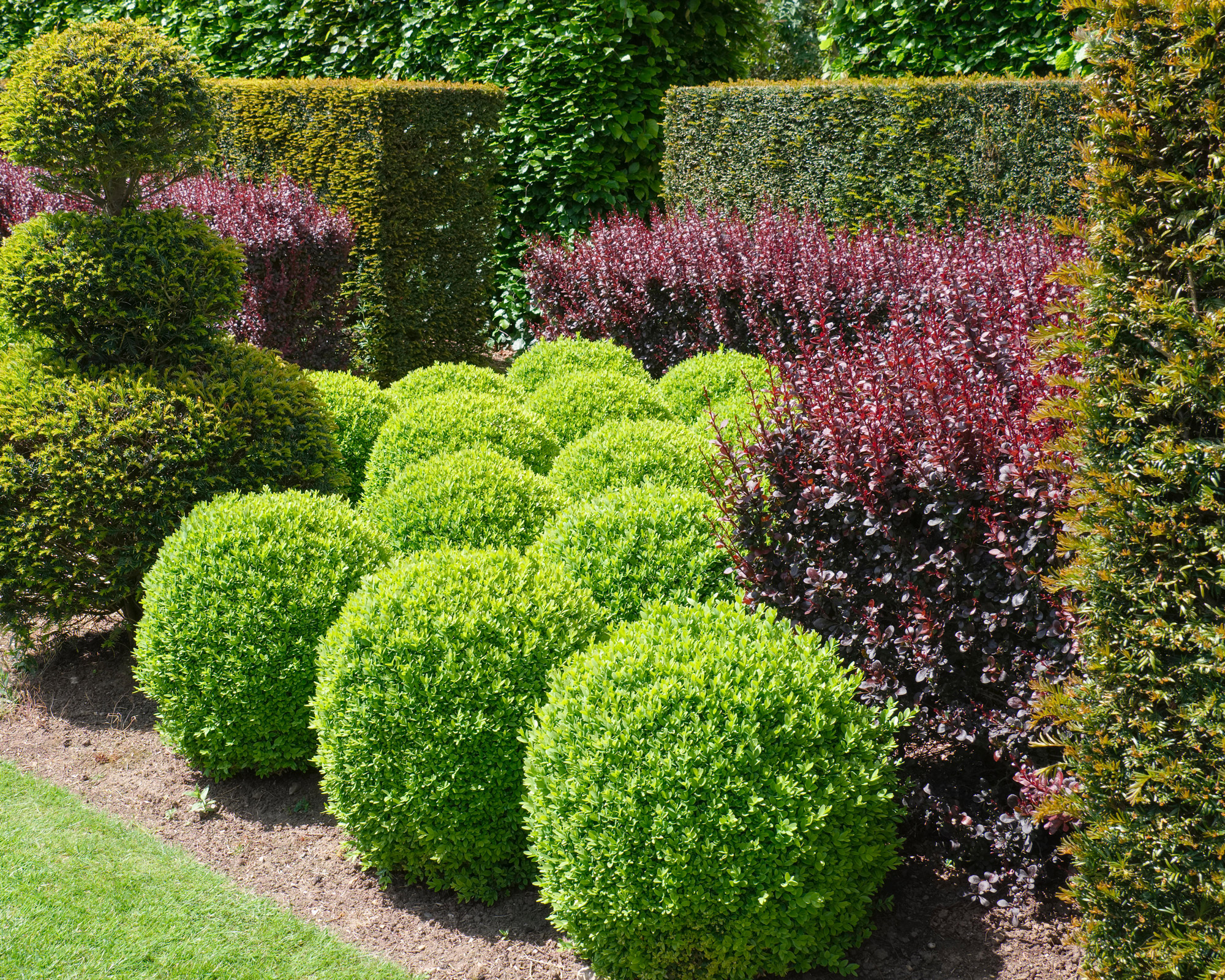
Great shrub partners for boxwood to accent color include purple berberis and golden brown yew
Where to buy boxwood
Most types of boxwood are sold as small plants growing in containers. You can buy these either in garden centers or nurseries, or in the garden departments of big box stores. However, the widest range is available by mail order. Use our quick links to find the right one for your plot.
Where to buy boxwood in the US:
- Shop boxwood plants at Lowe’s
- Shop boxwood plants at Monrovia
- Shop boxwood plants at Nature Hills
- Shop boxwood plants at Proven Winners
- Shop boxwood plants at White Flower Farm
Where to buy boxwood in the UK:

Graham Rice is a garden writer who has won awards for his work online, and in books and magazines, on both sides of the Atlantic. He is a member of a number of Royal Horticultural Society committees and the recipient of the 2021 Garden Media Guild Lifetime Achievement Award.
